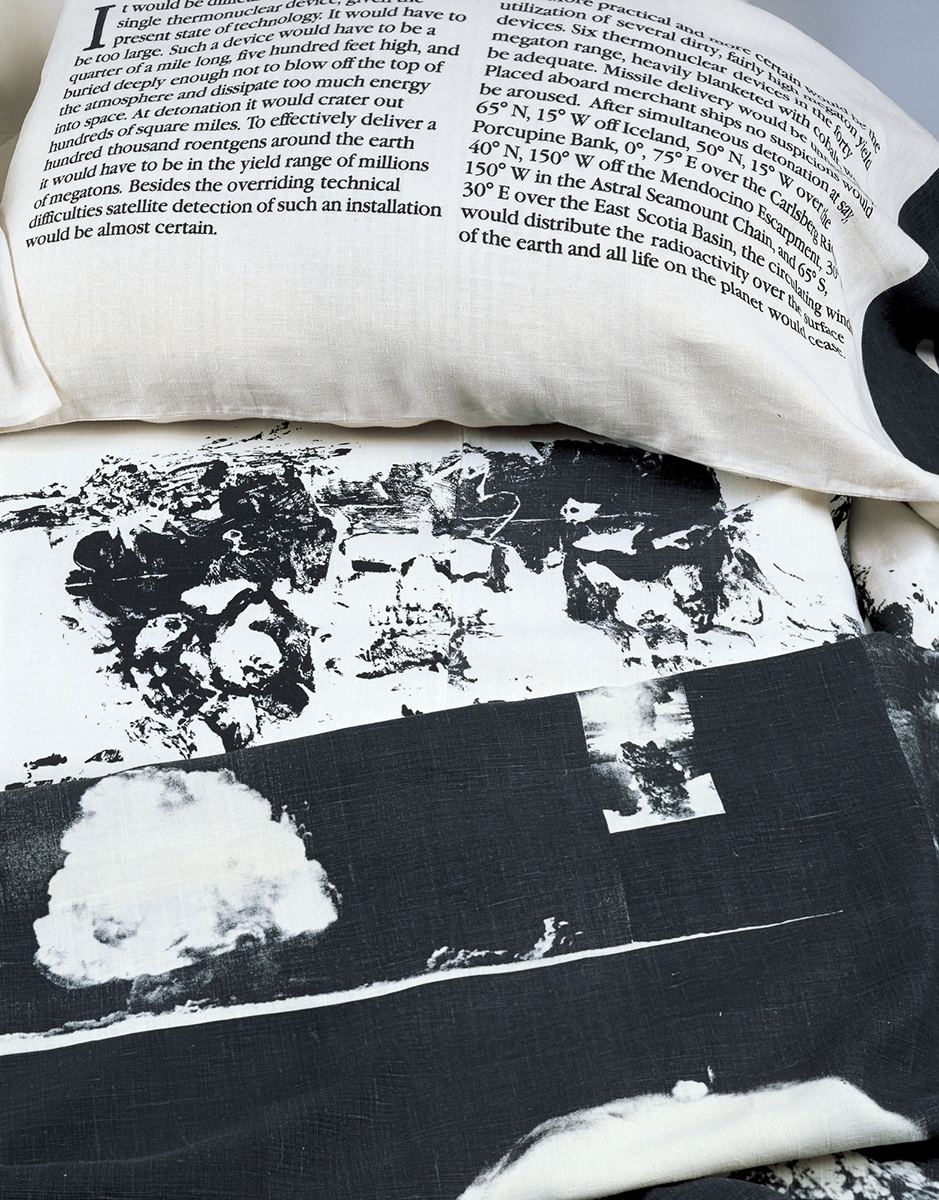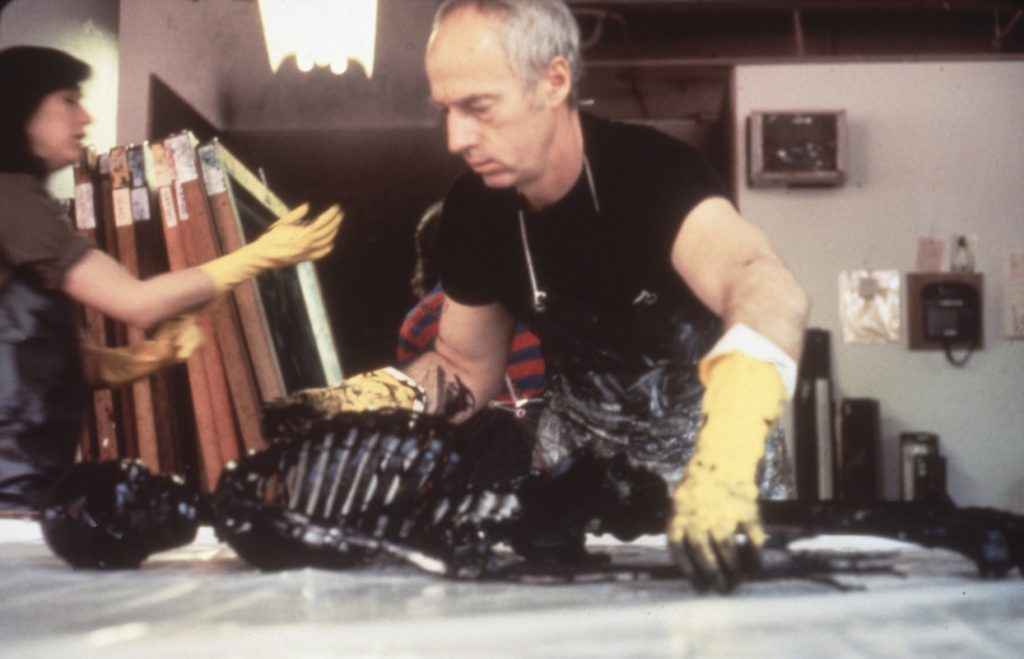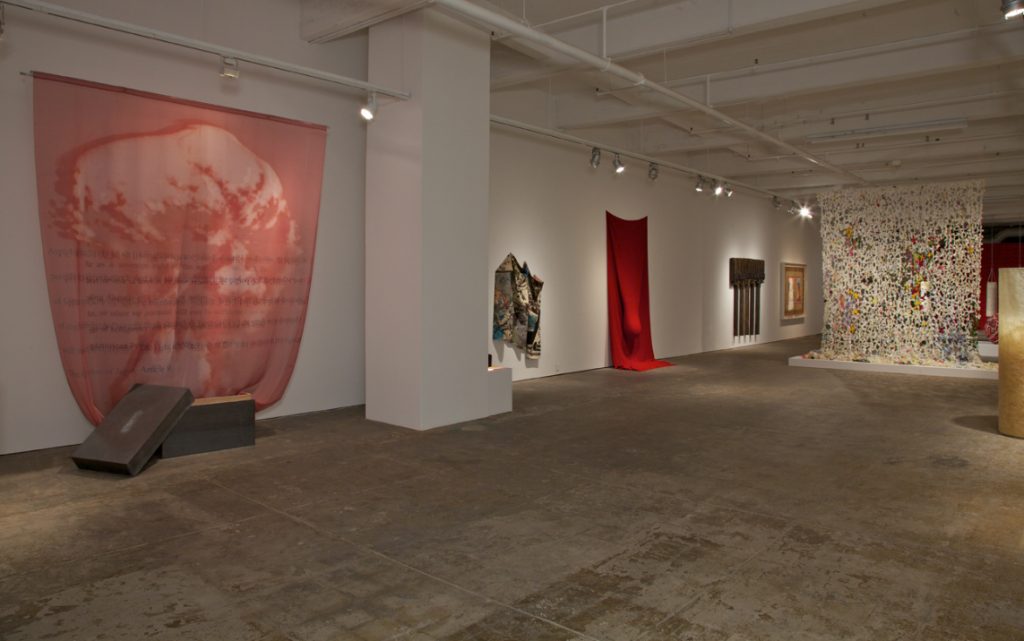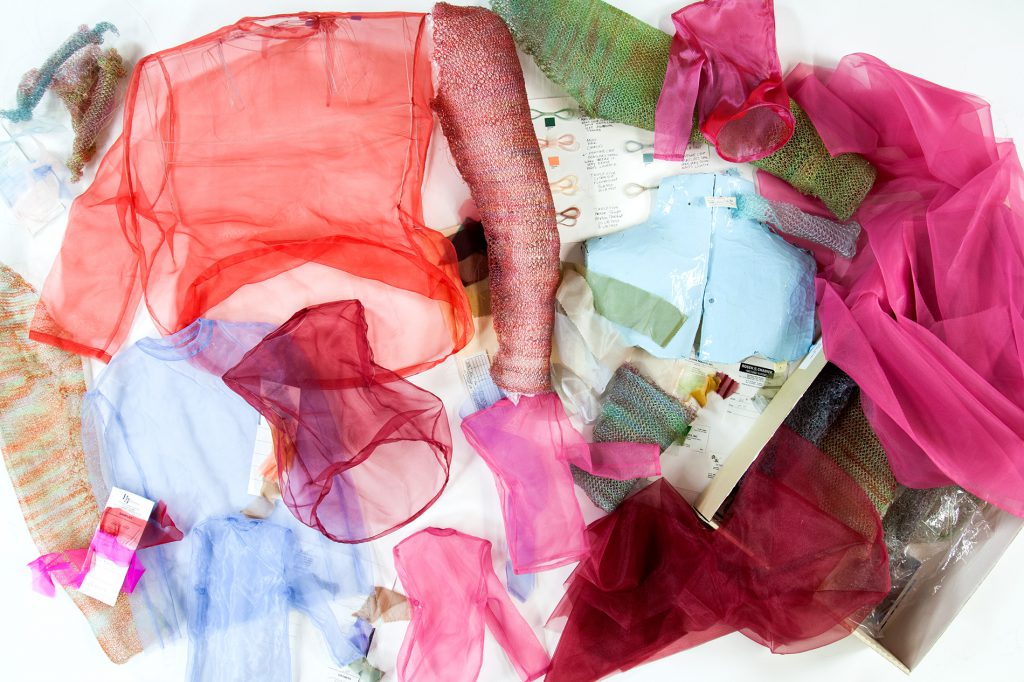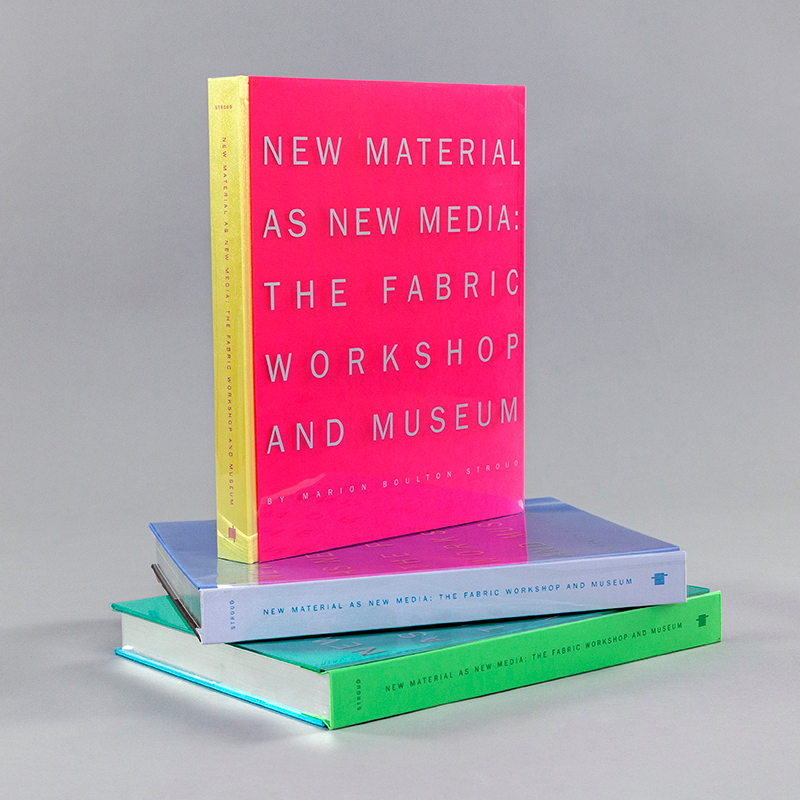Restless Sleepers/Atomic Shroud belongs to an unofficial series of works exploring the dark themes of nuclear destruction and death that Robert Morris began in the early 1980s. A bed comprised of sheets and pillowcases, this project presents a literal and ominous vision of world events gone terribly astray. To create the bottom sheet, Morris painted a human skeleton with ink and rolled it on fabric to give the effect of a moving, turning, restless corpse. This print was then used to make a silkscreen, from which the finished linen sheets were printed. The top sheet is laden with images of mushroom clouds from a nuclear explosion, also silkscreen printed on linen. The pillowcases offer printed text (taken from the writings of physicist Ted Taylor) reviewing the practical potential of nuclear destruction, which heightens the nightmarish terror implied by the tousled sheets. One paragraph states that “it would be difficult to achieve erasure with a single thermonuclear device . . .” while the other gives a more pragmatic prediction of destruction: “ . . . more practical and more certain would be the utilization of several dirty, fairly high megaton yield devices . . .”
Created during the beginning years of the Reagan era when the Cold War still dominated world politics, Restless Sleepers/Atomic Shroud holds new relevance today with the fear of nuclear terrorism.
